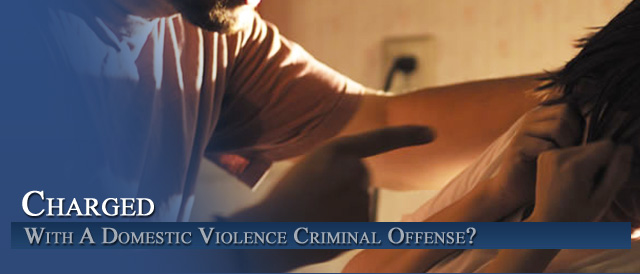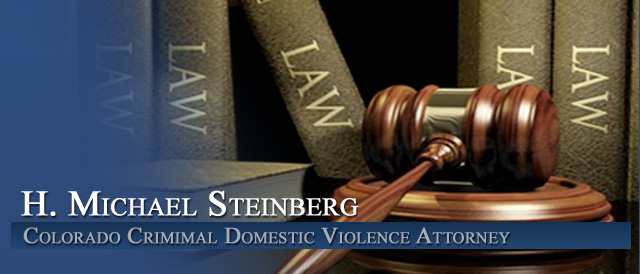




Limits On Hearsay Evidence – Colorado Domestic Violence Cases – The Crawford Decision
by Colorado Criminal Defense Lawyer for the defense of Domestic Violence Cases – H. Michael Steinberg
Introduction – Comparing Colorado Domestic Violence Cases to other kinds of criminal cases – the inherent weaknesses of these cases – is important to the individual accused of acts of domestic violence who is trying to decide whether a plea bargain offer makes sense and whether or not to accept it. Two United States Supreme Court cases – help limit the government from admitting hearsay evidence in otherwise weak cases.
Why Domestic Violence Cases Are Different
Obstacles For The DA To Successfully Prosecuting a Domestic Violence Case
Domestic violence is a crime that occurs in the privacy of one’s home. As a result, the only witnesses to the crime are often just the victim and the abuser. The typical he-said/she-said complexities is, in these cases, the most common barrier to successfully prosecuting these cases.
Studies have indicated that 80 to 85-percent of battered women will deny their allegations against an abuser at some point after the domestic violence incident and may even try to refuse to testify in court against their abuser. When a victim is reluctant to participate in the criminal justice system and recants her statements, the DA faces the major obstacle of explaining to a judge or the jury why a victim is unavailable.
This is a very difficult task. Trying to convince a judge or the jury to accept that it is not a legal requirement for a victim to testify in court.. relying on other evidence – is nearly impossible. Furthermore, a victim who is unavailable or is reluctant to testify as a witness also causes a judge or the jury to seriously question the legitimacy of the initial domestic violence complaint.
The Attempted Use of Hearsay Evidence In Colorado Domestic Violence Casea
As a substitute for victim testimony, prosecutors have been attempting to introduce hearsay evidence, in order to prosecute these cases and try to explain the severity of the crime(s) committed. This evidence includes verbal statements given by the victim to the police upon arrival at the scene of a crime and written statements made by the victim in the form of affidavits or civil restraining orders.
However, these efforts have been thwarted by the Supreme Court in three specific cases dealing with the Confrontation Clause. Although it can be assumed that the Supreme Court did not intend to hinder prosecution of domestic violence cases, the practical effect of the rulings was to limit hearsay that may be admitted into evidence during trial.
The ALLEGED Victim’s Reluctance to Participate in the Criminal Justice System
Alleged victims in domestic violence cases – as everyone in the system is aware – will often take steps to obstruct prosecution. The DA will attempt to explain this to the jury as a result of the so called “cycle of violence.” Many times – it is the alleged victim telling the truth for the first time.
Society does not understand why a victim would ” protect her abuser” from the criminal justice system …so using this tendency to question a recantation or inconsistent statement – the DA tries to explain this phenomenon by the cyclical nature of domestic violence and by trying to admit hearsay evidence – evidence from other sources than the alleged victim – to try to get around his/her inconsistent testimony and statements
Two Key Domestic Violence Supreme Court Cases – Crawford and Davis
As noted – DA’s who rely on victim testimony know their case is weak. Most alleged victims do not want their abuser arrested and, more importantly, are reluctant to participate in the criminal justice system.
As a result, law enforcement and prosecutors have begun to use other strategies and techniques to prosecute domestic violence abusers. Focus has shifted from relying on victim participation to using hearsay or out-of-court statements made by victims and, in few cases, by observing witnesses.
When a victim is unwilling to testify about a domestic violence incident, hearsay can be the only way to provide a description of what really happened. To allow hearsay testimony would diminish the incentive for an alleged victim’s live testimony. But the United Supreme Court has determined that there are many instances in which the use of hearsay violates the Confrontation Clause and a defendant’s Sixth Amendment rights, and is therefore inadmissible evidence.
In 2004, the Supreme Court significantly altered the doctrine of the Confrontation Clause in its treatment of “testimonial” statements made by an out-of-court declarant.
In Crawford v. Washington, the Court ruled that out-of-court statements made by witnesses, which are testimonial in nature, are “barred” under the Confrontation Clause, unless the “witnesses are unavailable and defendants had prior opportunity to cross-examine the witnesses.”
Although the Court did not specifically define “testimonial” statements, it did indicate that these statements were comprised of testimony given at a prior hearing, trial or grand jury proceeding and included police interrogations, as well. Most hearsay evidence used in domestic violence cases falls outside the scope of “testimonial” statements explained by the Supreme Court. As a result, the Crawford decision left behind “interim uncertainty,” a period in which courts split, had multiple definitions for “testimonial” statements, and prosecutors were unsure as to which hearsay evidence would be admissible, thereby complicating the prosecution of domestic violence cases.
Two years later, the Supreme Court slightly clarified Crawford with its ruling in Washington v. Davis . The Court explained that statements are “non-testimonial” when they are made “in the course of police interrogations under circumstances objectively indicating that the primary purpose of the interrogation is to enable police assistance to meet an ongoing emergency.”
With this ruling, the Court refined “testimonial” to statements made when the “circumstances indicate that there is no such ongoing emergency and the primary purpose of the interrogation is to establish or prove past events.” Basically, a court must now evaluate the nature of questions asked by a 911 dispatcher or a law enforcement official responding to a crime scene to determine the “level of formality” and to “assess the primary purpose” of the questions.
If a court determines that the questions were asked to “preserve information for later prosecution,” the statements will be considered testimonial and, in effect, inadmissible. Therefore, although the Supreme Court assisted the government by more clearly distinguishing between “testimonial” and “non-testimonial” statements, the Court also definitively limited the type of hearsay which may be admitted into evidence during a domestic violence trial.
The Supreme Court’s rulings in Crawford and Davis were intended to protect a defendant’s Sixth Amendment rights by limiting admissible hearsay evidence. Due to the unique nature of domestic violence, prosecutors had previously relied on this type of hearsay evidence to prove their cases. The effect of the Supreme Court’s rulings is to limit hearsay evidence which can be presented at trial for the successful prosecution of a WEAK domestic violence case.
Other Articles of Interest:
- Colorado Criminal Defense Law – Defending Domestic Violence Cases -Victim Recants
- Colorado Criminal Defense Law – Defending Domestic Violence Cases – Understanding Tactical and Trial Issues -Victim Recantation
- Colorado Civil Assist – Civil Standbys in Domestic Violence Cases
- Colorado Domestic Violence: An Industry
- Colorado Domestic Violence Cases Prosecuting With No Victim – Can They Still Go To Trial?












